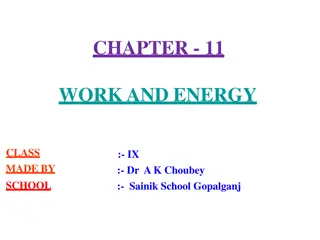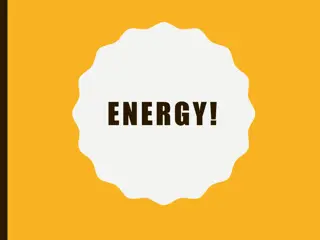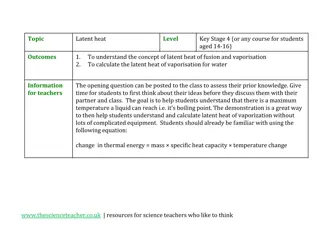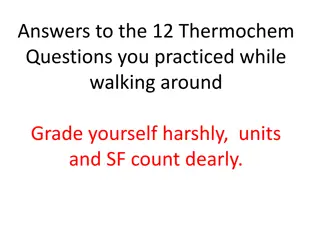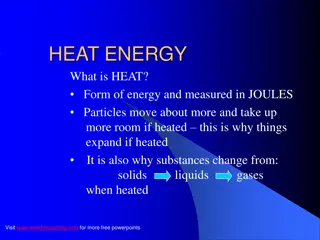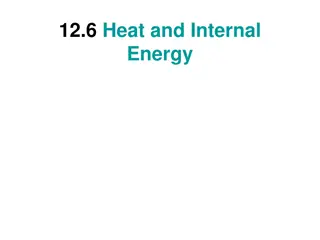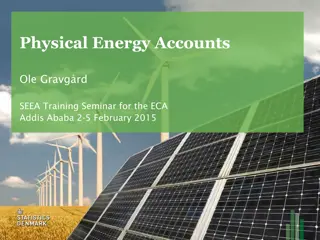Exploring Energy Stores and Transfers in Science Lessons
Dive into the fascinating world of energy stores and transfers through engaging science lessons. Recall different energy stores, common energy transfers, and create flow diagrams to illustrate energy transfers in various scenarios. Explore gravitational, elastic, magnetic, electrostatic potential en
5 views • 9 slides
Understanding Work and Energy in Physics
Work is defined as the product of force and displacement, measured in joules. It can be positive, negative, or zero based on the force and displacement directions. Energy is the capacity to do work, with kinetic energy related to motion and potential energy associated with position. Kinetic energy d
3 views • 10 slides
Understanding Energy and its Forms in Physics
Energy is the capacity to do work and cause motion, measured in Joules (J). This presentation delves into potential energy (elastic and gravitational) and kinetic energy, explaining their formulas and practical applications through examples and practice questions.
4 views • 39 slides
Exploring Latent Heat of Vaporisation through Demonstration
Students will learn about latent heat of fusion and vaporisation, specifically focusing on calculating the latent heat of vaporisation for water. Through a hands-on demonstration, students will understand the concept that a liquid cannot exceed its boiling point temperature, as energy is used to bre
0 views • 4 slides
Understanding the Relationship Between Work and Energy
Work and energy are closely related concepts in physics, where work involves the transfer of energy when a force is applied to move an object in the same direction. The equation for work is given by Work (joules) = Force (newtons) x Distance (m), and power represents the rate at which work is done,
0 views • 7 slides
Thermochemistry Problem Practice and Solutions
Practice and solutions for thermochemistry problems involving energy calculations, temperature conversions, and phase changes. Includes calculations for melting ice, converting temperature to joules, and determining energy required for heating substances.
0 views • 14 slides
Understanding Heat Energy Transfer and Conduction in Materials
Heat energy is a form of energy measured in joules that causes particles to move faster, expand, and change states. Learn about the difference between heat and temperature, heating and cooling processes, and the methods of energy transfer such as conduction. Discover how materials conduct heat diffe
0 views • 18 slides
Understanding Energy Conversion, Power, and Momentum in Physics
Exploring the concepts of energy conversion between potential and kinetic energy, the importance of power in work efficiency, and the role of momentum and impulse in describing motion in physics. The discussion covers elastic forces, work done, power calculations, examples of watt and joules, as wel
0 views • 28 slides
Understanding Heat, Internal Energy, and Specific Heat Capacity
Heat is energy transfer due to temperature differences, measured in joules or calories. Internal energy includes kinetic and potential energies. Specific heat capacity is the heat needed to change temperature. Units like joules, calories, and BTUs are common. Calorimetry is used to measure heat chan
0 views • 13 slides
Understanding Physical Energy Accounts and SEEA for Economic Analysis
Physical Energy Accounts play a crucial role in analyzing energy use in the economy and its impact on the environment. The System of Environmental-Economic Accounting (SEEA) provides a methodology for describing energy flow using national accounts frameworks, including supply-use tables and asset ac
0 views • 18 slides

